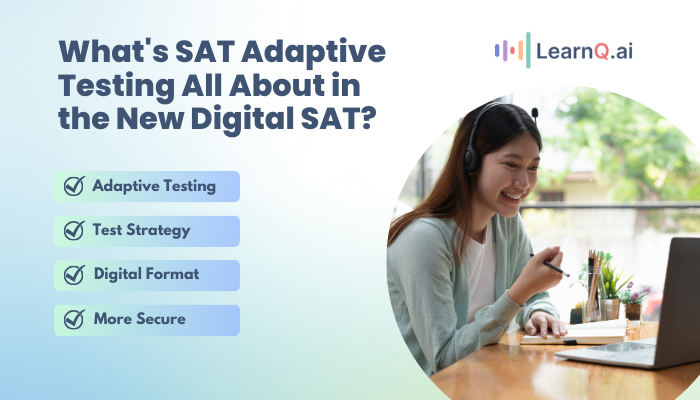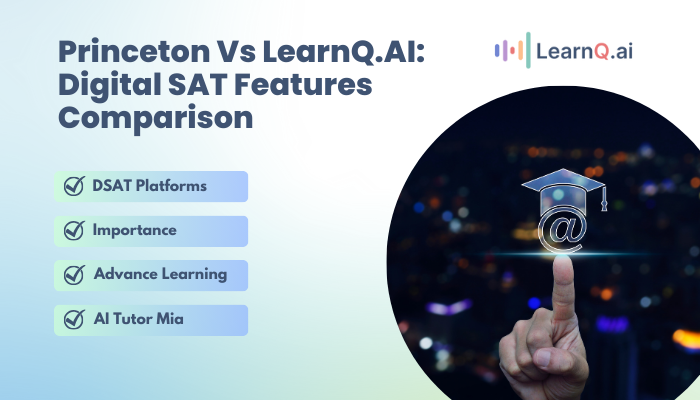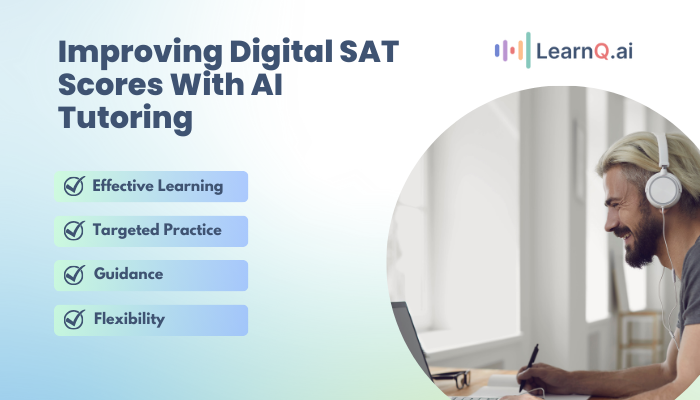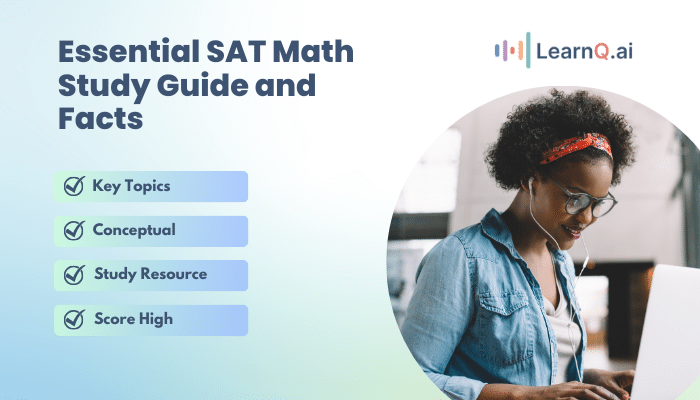If you’re gearing up for the SAT or PSAT, there’s some exciting news on the horizon. These assessments are making a big leap into the digital world. That’s right, we’re talking about a fully digital format that’s set to revolutionize the way you take these tests. And the cherry on top? The introduction of adaptive testing. Let’s get into what this all means for you and how it’s going to make your testing experience better than ever.
The College Board has decided that it’s time to say goodbye to the traditional paper-and-pencil SAT and PSAT. Instead, they’re embracing technology with open arms by transitioning to a fully digital format. This change isn’t just for show; it’s all about making the testing process more streamlined, secure, and student-friendly.
Digital SAT Employs Adaptive Testing to Evolve Based on a Student’s Performance
This isn’t just a small tweak; it’s a complete overhaul aimed at making the testing experience better for students like you. This means the test will adjust its difficulty based on how you’re doing. So, if you’re acing it, the questions will get tougher. If you’re struggling, they’ll get easier. The goal? A test that’s more tailored to your abilities.
Understanding SAT Adaptive Testing
Alright, let’s learn more about the concept of adaptive testing, which is a game-changer for the digital SAT. This approach is all about making the test as personalized as possible. Here’s how it works:
- Adaptive Testing Basics: In adaptive testing, the difficulty of the questions you get depends on how you’re doing. If you’re answering correctly, the test gets harder. If you’re having trouble, it gets easier. This way, the test can zero in on your true ability level.
- Multistage Adaptive Testing: The digital SAT uses a specific type called multistage adaptive testing. Picture the test as a series of modules. Based on how you do in one module, the test decides which module you’ll tackle next. It’s like choosing your adventure but in a test!
- Accurate Measurement: The beauty of adaptive testing is that it can measure your abilities more precisely. Since the test adjusts to your level, it can give a clearer picture of what you know and can do.
So, you can say that adaptive testing is all about making the SAT more personalized and accurate. It’s a smart way to assess your skills and help you show off your true potential.
Structure of the Digital SAT
Now, let’s take a closer look at how the digital SAT is structured. This isn’t your typical test with a set order of questions. Instead, it’s designed to be more flexible and adaptive to your performance. Here’s what you need to know:
- Modular Structure: The digital SAT is divided into modules. This setup allows the test to adapt to your performance in real time, using what’s known as the Section Adaptive testing method.
- Adapting to Your Performance: How you do in the first module determines the difficulty level of the questions in the next modules. It’s like the test is constantly recalibrating to match your skill level, ensuring that it’s neither too easy nor too hard for you.
- Flexibility Within Modules: Unlike traditional tests, where you have to answer questions in order, the digital SAT lets you move between questions within each module. This added flexibility allows you to tackle the questions in the order that suits you best.
Overall, the structure of the digital SAT is designed to make the testing experience more personalized and adaptable to your abilities. It’s a modern approach that aims to give you the best chance to showcase your skills.
Benefits of Adaptive Testing in Digital SAT
The introduction of adaptive testing in the digital SAT brings a whole host of advantages. This new approach is set to transform your testing experience in several key ways. You might be thinking, “Why fix something that isn’t broken?” But the shift to digital testing comes with a bunch of advantages. Here are a few key benefits:
Here’s what you can look forward to:
- Shorter and More Personalized Tests: Adaptive testing means the digital SAT can zero in on your ability level more quickly. This leads to a shorter test that’s tailored to your strengths and weaknesses, making for a more individualized experience.
- Quicker Process with Immediate Results: One of the biggest perks of the digital SAT is the speed. The testing process is faster, and you can even get your scores on the same day. No more waiting weeks to find out how you did!
- Enhanced Security and Efficiency: Moving away from paper-based tests, the digital SAT promises better security and a more efficient testing process. This means less chance of test leaks and a smoother experience on test day.
adaptive testing in the digital SAT is a win-win situation for test-takers and educators alike.
Drawbacks and Concerns
While the shift to adaptive testing in the digital SAT has its perks, it’s not without its challenges and concerns. Let’s get into what you might want to keep an eye on as you gear up for the test:
- Stress Over Question Difficulty: Sometimes, you might find yourself stressing over whether the questions are getting harder or easier, and what that says about your performance. Remember, it’s all about staying focused and not letting the test’s adaptive nature throw you off your game.
- Initial Questions Myth: There’s a bit of a misconception floating around that the first few questions are super important in setting the tone for the rest of the test. But here’s the deal: the test adapts based on your overall performance, not just the first few questions. So, take a deep breath and tackle each question with confidence.
- Impact of Careless Errors: In an adaptive test, a small slip-up early on can have a bigger impact than you might expect, as it could lead the test to underestimate your abilities. That’s why it’s crucial to stay sharp and double-check your answers, especially in the beginning.
While these concerns are something to consider, remember that the digital SAT is designed to be a fair and accurate measure of your abilities. With the right preparation and mindset, you can navigate these challenges and show off your true potential on test day.
Preparation Strategies for SAT Adaptive Testing
Adaptive testing might seem like a whole new ball game, but don’t worry, there are plenty of ways to get yourself ready for the digital SAT. Here are some strategies to help you ace this test:
- Leverage the College Board’s Bluebook App: This app is your go-to resource for practicing adaptive tests. It’s designed to mimic the digital SAT, so you’ll get a feel for what the real test will be like. Moreover, you can also leverage platforms like LearnQ.ai that offer an abundance of assistance to SAT students with features like full-length practice tests, diagnostic tests, play and practice, and a full-time AI tutor just for you- Mia!
- Master Pacing and Timing: The modular format of the digital SAT means that pacing and timing are more important than ever. Practice managing your time effectively, so you can tackle each module without feeling rushed. Read this blog to know everything you need for your SAT prep!
- Boost Your Academic Skills: Brush up on your knowledge in math, reading, and writing. The stronger your academic skills, the better equipped you’ll be to handle the questions on the test.
- Focus on Self-Checking Strategies: To avoid those pesky careless errors, develop a habit of double-checking your answers. A little extra attention can go a long way in ensuring you don’t lose points unnecessarily.
By incorporating these strategies into your prep, you’ll be well on your way to conquering the adaptive nature of the digital SAT. Just remember, practice makes perfect! Therefore, you need to go out there, and give as many practice tests as possible!
Looking Ahead: Implications for Students and Educators
The shift to digital and adaptive testing in the SAT is a big deal, not just for students, but for educators too. It’s a whole new landscape that everyone needs to navigate. Here’s what this change means for the future:
- New Study Habits for Students: If you’re a student, you might need to tweak your study habits and test-taking strategies to thrive in this adaptive format. It’s all about being flexible and ready to tackle a more personalized test.
- Curriculum Adjustments for Educators: Teachers and educators, you’re not off the hook! You might need to update your curriculum and guidance to ensure your students are prepared for this new digital and adaptive testing environment. And, if you need any assistance, platforms like LearnQ.ai are always there to help you. Book a free demo now!
- A Focus on Technology and Individual Performance: This transition is all about embracing technology and assessing students based on their performance levels. It’s a significant shift that’s set to change the game in standardized testing.
So, whether you’re hitting the books or shaping young minds, it’s time to get ready for a future where technology and personalized testing take center stage. Let’s embrace the change and make the most of this new era in education!
Conclusion
The shift to digital SAT adaptive testing marks a significant advancement in the field of standardized assessments. As students and educators prepare for this transition, it is crucial to leverage resources like LearnQ.ai to excel in the adaptive format.
LearnQ.ai offers a comprehensive platform for students to prepare for digital SAT adaptive testing. Its diagnostic test provides students with personalized insights into their strengths and areas for improvement, helping them tailor their study plans effectively. Additionally, Learq.ai’s adaptive learning technology ensures that students receive targeted practice questions that align with their skill levels, maximizing their preparation efficiency.
Educators can also benefit from LearnQ.ai’s platform by using its data-driven insights to adjust their curriculum and guidance to better prepare students for digital and adaptive testing environments. By incorporating LearQ.ai into their teaching strategies, educators can help students develop the necessary skills and strategies to excel in the digital SAT adaptive format.
Overall, LearnQ.ai’s offerings and features are poised to play a crucial role in helping students and educators navigate the transition to digital SAT adaptive testing. Its personalized approach to learning and adaptive technology makes it a valuable resource for anyone preparing for the future of standardized testing.
Start Your Prep today with LearnQ.ai!











